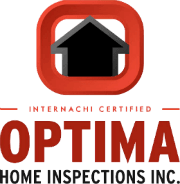Pest inspections are an essential part of maintaining a healthy and safe environment in our homes and businesses. Understanding how to identify common signs of pest damage early can save you time, money, and a lot of headaches. In this guide, we’ll walk through the types of damages you might encounter during pest inspections and offer tips on how to spot them easily.
Understanding the Importance of Pest Inspections
Regular pest inspections play a crucial role in property maintenance. They help detect early signs of infestations, minimizing damage and future costs. Whether it’s your home or business, knowing what to look for during these inspections can make a significant difference. Beyond just spotting pests, understanding the dynamics of your property can reveal susceptible areas prone to infestation. Regular monitoring not only helps in mitigating current issues but also aids in preventing future outbreaks by identifying and sealing potential entry points for pests.
By incorporating pest inspections into your routine maintenance, you create a safer environment. For instance, early detection of wood-damaging pests can prevent the collapse of critical structures. This proactive approach also helps maintain the aesthetic value of a property. No one wants to deal with unsightly damage caused by termites or rodents nibbling away at walls and furniture. Keeping a watchful eye and conducting frequent inspections ensures any pest problem is addressed promptly before it escalates into a crisis.
Common Types of Pest-Related Damage
From structural damage caused by termites to the contamination of food supplies by rodents, pest infestations can cause a wide array of issues. Familiarizing yourself with these common problems is the first step toward effective pest management. Notably, termites can eat away at wooden foundations causing sagging floors and warped walls, while rodents have a knack for contaminating food storage areas, making swift actions essential to preserving household safety.
Fungi and mold proliferate in places infested by pests due to the moisture some pests bring along with them. Cockroaches, for example, can trigger allergic reactions and asthma in vulnerable individuals. Knowing such potential outcomes underscores the necessity of timely pest inspections. This knowledge empowers property owners to swiftly identify and procure the necessary assistance to rectify the amassing damages.
Telltale Signs of Termite Damage
Termites are notorious for their ability to wreak havoc on wooden structures. Look for signs such as hollow-sounding wood, mud tubes, and discarded wings. Early detection can save your property from extensive damage. Older establishments are particularly vulnerable as their wooden components may already be compromised, making them ideal feeding grounds for termites. Spotting these signs early in the pest inspection routine can dictate the remedial measures to implement and sow savings down the line.
One telltale sign is mud tubes. Termites use these as a form of transportation between their nest and their food sources. These tubes, resembling small pencil-thick lines, are often found along walls, foundations, or in crawl spaces. Breaking open a mud tube and noticing live termites inside is a clear indication of an ongoing infestation. Don’t ignore small piles of what look like sawdust, either—these could be signs of dry wood termite activity.
Identifying Rodent Damage in Inspections
Rodents can inflict considerable damage by chewing through wires, walls, and food supplies. Learn to recognize signs like gnaw marks, droppings, and nests to catch these pests before they multiply. Given that rodents have a habitual need to gnaw to keep their ever-growing teeth in check, spotting chew marks on cables or wooden surfaces can be your first red flag. Ignoring these telltale signs can lead to more serious issues, like electrical fires instigated by frayed wires.
Odd sounds within walls, particularly at night, can hint towards a burgeoning rodent problem. Nests fabricated from shredded paper or insulation found in secluded areas further corroborate rodent activity during inspections. Droppings, mostly found near food supplies, are another blatant indicator; they can measure about 18 mm and sometimes more, signaling the need for immediate intervention. Upon noticing such indications, swift measures, such as sealing entry points and setting traps, must follow to avoid extensive infestations.
Spotting Insect Damage in Different Areas
Different insects prefer different environments. From ants in the kitchen to silverfish in the bathroom, discovering the distinct types of damage can help zero in on treatment methods. Kitchens tend to attract ants due to food crumbs and spills, which, if unidentified, could cater to their food needs, making them difficult to eliminate. On the flip side, bathrooms often become a haven for pests like silverfish due to the dampness and organic materials found there.
Moreover, bedbugs can breed rapidly, forcing homeowners to scrutinize mattresses and furniture. Understanding where each insect tends to thrive can improve inspection efficacy. Inspect corners and crevices for any signs of eggs or larvae. Often, finding one pest is indicative of more hiding within the nooks and crannies of a property. Hence proper documentation and preventative strategies need to be consistently implemented after each inspection.
Practical Tips for Conducting Effective Pest Inspections
Conducting thorough inspections involves checking hidden corners and using the right tools. Equip yourself with flashlights, magnifying glasses, and notepads to document findings and plan for prevention. Remember to prioritize areas known for harboring pests, such as basements, attics, and kitchens. If possible, invest in technology like moisture meters or infrared cameras, which can detect hidden infestations invisible to the naked eye.
Consider establishing a comprehensive checklist covering all aspects of potential pest problems. This hands you a robust framework, ensuring no stone is left unturned when assessing your property. This multifaceted approach not only enhances the efficacy of your inspections but also simplifies monitoring and maintenance over time. Ensuring regular updates to this checklist, in line with evolving pest behavior, fortifies your preventive measures, keeping your property pest-free.
Looking Ahead: Stay Alert and Protect Your Property
Being vigilant about pest inspections and understanding the signs of common damage can help you ensure you’re catching issues early on. By knowing what to look for, you can take proactive steps to protect your property and maintain a safe environment. Remember, it’s always better to be preventative when it comes to pest control.


